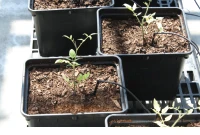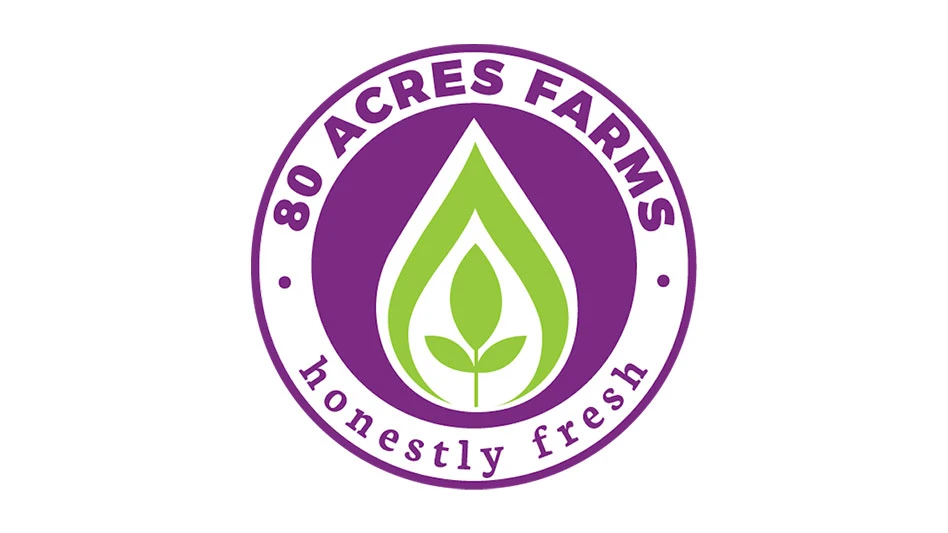
 Medium is the substance in which plants are grown. Examples of media include composted pine bark, perlite or even water. There are three main functions requirements for medium by today’s standards to support plant growth:
Medium is the substance in which plants are grown. Examples of media include composted pine bark, perlite or even water. There are three main functions requirements for medium by today’s standards to support plant growth:
- First, medium must be able to hold nutrients in quantities that are needed for successful plant growth.
- Second, medium must hold a reasonable reservoir of plant available water. Medium must be porous enough to enable water binding so the plants have access to moisture throughout the day.
- Third, medium must provide for the exchange of gases between roots and the atmosphere outside the medium. Plants need dissolved oxygen in their root system so they can use it for photosynthetic processes.
In greenhouse vegetable production, all of the main functions are important. The support system allows for vertical production of greenhouse vegetables and maintains a large above-ground surface area relative to the root systems. Some general guidelines should be taken into consideration before purchasing media.
1. Size of particles
Greenhouse medium needs to be of a large particle size so that it can have good gas exchange with the outside environment and good water drainage. Examples of media with large particle size are coarse pearlite, composted pine bark and rockwool.
2. Accessibility of the medium in the area
Not all media are accessible throughout the United States. In the south, composted pine bark is available and cheaper than most other media. Composted pine bark has a high cation exchange capacity (CEC) which allows it to attract and hold nutrients and water to its surfaces. It also has large particles which enable gas exchange supporting good plant growth. Perlite is another widely used medium that is popular for growing greenhouse vegetables. Perlite is a volcanic mineral that is expanded by heating at high temperatures in a furnace. The result is an inert, sterile and lightweight medium that has a high water and nutrient holding capacity.
A recent novel sustainable medium that is worth mentioning is coir, which comes from coconut fruit. The outer shell of the coconut is soaked in water and shredded to release long fibers. These fibers are compressed and dried to form dense blocks. Before use, coir must be rehydrated, either by the supplier or by the grower. Coir is rehydrated when the blocks or ground blocks soaked in sufficient water overnight contain approximately 70 percent moisture by weight. The hydrated coir is then ready to be placed into the container and used for greenhouse vegetable production.
3. Type of greenhouse vegetable
 Both composted pine bark and perlite are ideal for greenhouse vegetable crops such as tomato, cucumber and peppers. Popular greenhouse fruit strawberries thrive in coarse media such as perlite or composted pine bark because they need a well-drained environment. Leafy greens, such as lettuce and herbs, can also be grown in solid media. However, they grow exceptionally well when placed directly in a hydroponic nutrient solution. Growing systems like nutrient film technique (NFT) and deep-water culture allow leafy greens to grow faster and produce high-quality plants.
Both composted pine bark and perlite are ideal for greenhouse vegetable crops such as tomato, cucumber and peppers. Popular greenhouse fruit strawberries thrive in coarse media such as perlite or composted pine bark because they need a well-drained environment. Leafy greens, such as lettuce and herbs, can also be grown in solid media. However, they grow exceptionally well when placed directly in a hydroponic nutrient solution. Growing systems like nutrient film technique (NFT) and deep-water culture allow leafy greens to grow faster and produce high-quality plants.
4. Money you budgeted for buying media
There is no need to spend extra money on expensive medium that has the same requirements as cheaper media. However, if you are willing to spend more money, rockwool is highly efficient. Rockwool is an inert, porous, sterile growing medium from rocks that are heated at high temperatures to form thin fibers and formed into larger slabs or loose cubes. The composition of rockwool is approximately 60 percent basalt, 20 percent limestone and 20 percent coke (high carbon material usually from coal by-processing). Rockwool is highly efficient due to its high water and nutrient holding capacity, ability to hold dissolved oxygen for gas exchange with roots and the fact it can come in various sizes and shapes adaptable to any growing system.
T. Casey Barickman is an assistant research and extension professor in Horticulture at Mississippi State University. His research is in small fruit and vegetable production with an emphasis in plant physiology and nutrition. He focuses on evaluating sustainable and organic production systems, greenhouse vegetable production, nutrient management, environmental stress physiology, and plant growth regulation. He can be reached by email at cb2407@msstate.edu or by phone at (662) 566-8001.

Explore the April 2015 Issue
Check out more from this issue and find your next story to read.
Latest from Produce Grower
- Resource Innovation Institute adds six members to Board of Directors
- Nufarm announces unified brand
- Peckham acquires Revolution Farms in Michigan
- Fresh Express expands Chopped Salad Kits line with three new flavors
- The Growth Industry Episode 3: Across the Pond with Neville Stein
- University of Evansville launches 'We Grow Aces!' to tackle food insecurity with anu, eko Solutions
- Lawsuit challenges new H-2 visa rules
- Q&A: Sandra Eskin Leads Food Safety Advocacy Organization, STOP, as CEO





